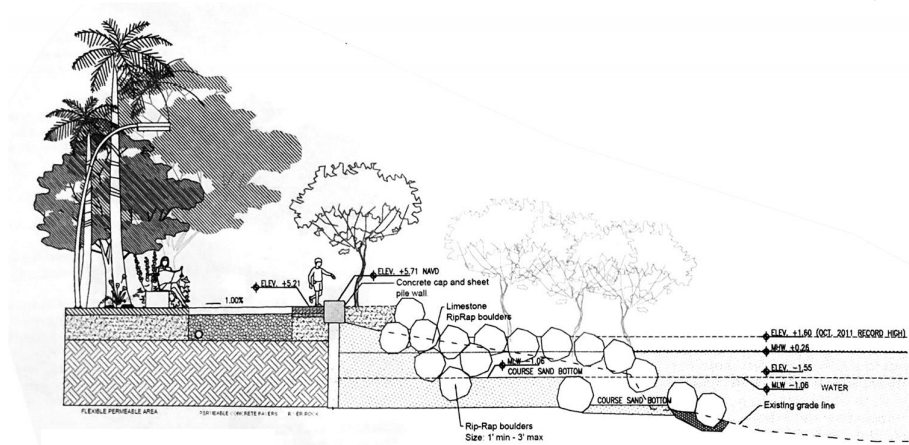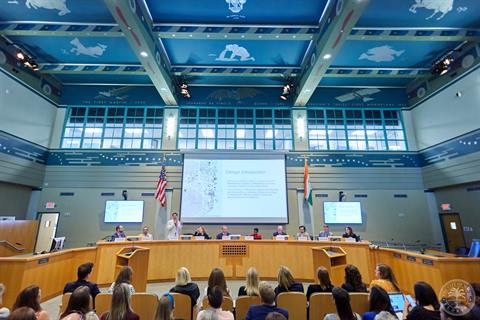
Earlier this month, the City of Miami and the Downtown Development Authority invited ten experts from the Urban Land Institute (ULI), a non-profit real estate research and development organization, to visit Miami and host a panel on rising seas. It is a topic on the minds of many in South Florida, and the panelists were unsurprisingly met with a packed house at City Hall.
The panelists spent the days leading up to the event touring the city’s waterfront and meeting with more than 80 stakeholders in order to develop a set of strategic recommendations. As it stands, Miami is both besieged by climate change and in the midst of a development boom. The economy is strong, there is a high demand for housing, and significant investments are pouring in from both locals and abroad. Miami real estate shows the 2nd fastest growth in the US, but just this week, the Miami Herald also called it “ground zero” for the nation’s environmental emergency. These are powerful but opposing forces at play, and it was essential for the ULI to take this unique context into account while forming their recommendations.
An overview of ULI’s findings were presented at the meeting on June 7, and a more comprehensive report is scheduled to come out in the months to come. Several of their recommendations, such as updating zoning and building codes, increasing seawall heights, and even rewriting the city’s master plan with resilience in mind, could have a major impact on development moving forward.

An Overview of ULI’s Recommendations for Miami
One thing everyone agreed on is that it is essential for Miami to rethink its relationship with water. “This is a city in and from the water,” said Miami native and panel member Michael Rodriguez of CBRE. According to the latest reports, an extra two feet of water is projected to arrive in Miami by 2060. The city must be ready to adapt.
Other suggestions from the panel included revising the Miami Baywalk design for increased resilience, updating transit planning to align with housing and land use policies, and building “living shorelines” out of Biscayne Bay.
At the event, panelist John Macomber of Harvard Business School posed the big question on everyone’s mind: “How do we pay for all of this?” The Baywalk redesign, for instance, is in the range of $50-100MM, while more robust defenses like a tidal gate at the river are closer to $500MM- $1B. ULI’s resilience scenarios made a case for looking at investments that could reduce uninsured losses, as well as sources of funds ranging from the city to private investors to philanthropy.

The ULI Panel on Climate Change at City Hall. Image Credit
Meanwhile, Jason Bonnet, a panelist representing the investor and homeowner level, made note of the fact that flood insurance rates are likely to go up. But he believes that by altering its building codes, Miami has the opportunity to “bring confidence to markets by being a leader.”
In March, the City Commission made history by approving the city’s first piece of legislation related to protection from sea level rise. “The move to add resilience methods into the Miami 21 zoning code was met with support from environmental organizations, community leaders and from residents,” reported The Miami New Times. Continuing changes, including the implementation of several of ULI’s suggestions, are likely to take shape in the coming year.
As members of the commercial real estate community, we must stay on top of these developments as they come. Changing zoning codes and a potential new master plan will have an undoubted impact on our industry. We at ComReal are committed to progress that benefits us all, and we will continue to keep you updated on these changes as they come.

ComReal is your go-to resource for all things Commercial Real Estate. Contact us today.

